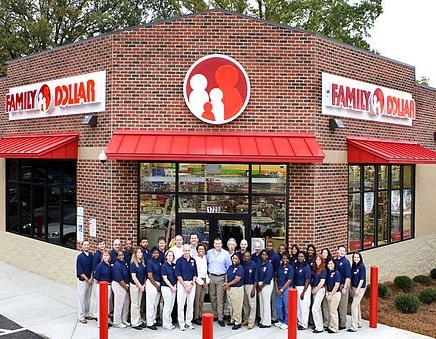Dollar stores: Business success and economic failure

By Phil Mattera, Dirt Diggers Digest
What does it say that an all-out takeover battle is being waged for a chain of no-frills stores selling cheap merchandise at outlets typically located in the most downscale parts of town? The answer is that deep-discount retailing, which entered the mainstream during the recession of the late 2000s, remains a lucrative business as much of the country struggles with stagnating income levels.
The focus of the current bidding war is Family Dollar Stores, the second largest chain of deep discounters, also known as dollar stores. A couple of months ago, Dollar Tree, the third largest chain, announced plans for an $8.5 billion purchase of Family Dollar, which had been targeted by several corporate raiders such as Carl Icahn, who bought a 9 percent stake in the firm.
Family Dollar's management seemed willing to throw in its lot with Dollar Tree and create a combined company with about 13,000 stores that could not only neutralize Icahn but also challenge the current leviathan of the industry, Dollar General with its 11,000 stores.
Dollar General, which long had its eye on Family Dollar, did not take kindly to the prospect of being relegated to second place. It launched its own fatter bid for Family Dollar, and after being rebuffed, it is now going hostile. It has announced a tender offer under which Family Dollar investors could sell their shares for $80 each, well above the $74.50 that Dollar Tree said it would pay.
As interesting as this may be to analysts of mergers and acquisitions, the takeover battle is not the most significant story here. First, there is the alarming fact that it is taken for granted that the marriage of two giant dollar-store chains can receive antitrust approval. The original Dollar Tree-Family Dollar deal has been promoted by the two companies with the argument that it was likely to be blessed by the Federal Trade Commission. Dollar General argues that its promise to sell off 1,500 outlets would make its deal palatable to the federal regulators. Why shouldn't any combination among the three chains be considered unacceptable? And what about the even more controversial possibility, as has been widely rumored, that Wal-Mart might try to take over one of the dollar chains to shore up its faltering small-store strategy? Are we to assume that would get approved as well?
At the same time, there has been surprisingly little discussion of how these companies operate. For example, there's the matter of their labor practices. Dollar General, Family Dollar and Dollar Tree are not often mentioned alongside Wal-Mart, yet they are also low-paying, non-union employers that have been involved in numerous wage and hour controversies. The dollar stores, whose outlets have much smaller staffs than those at Supercenters, have mainly been accused of improperly denying overtime pay to so-called store managers and assistant managers who spend most of their time on non-managerial tasks such as stocking shelves and unloading trucks. Family Dollar, for instance, fought one such case all the way to the U.S. Supreme Court, where it lost and finally had to pay a $33 million judgment.
And then there's the issue of the basic business model of the dollar stores. This is a sector that to a great extent profits from economic desperation. Although a small portion of its customers are middle-class people looking for a bargain, most are lower-income individuals who cannot afford to shop at the likes of Wal-Mart, much less non-discount chains.
The deep-discount chains were supposed to have shrunk once the economy was in recovery. Their continued growth is a symptom of ongoing wage stagnation, and their business success is a sign of a broader economic failure.
